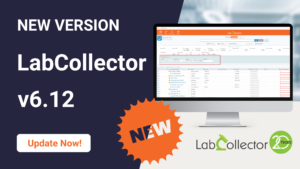Safety has always been a critical part of working in any lab. Anyone who has worked in a lab has stories about accidents and near misses. C&E News has an entire section dedicated to lab safety. One of my own personal favorite stories involves a near miss during my time as a graduate student when I was working with a summer undergrad.
The student’s first bit of lab work involved the purification of several organic chemicals by recrystallization and column chromatography. The student came into the lab to weigh silica gel and sand wearing thick rubber gloves, safety glasses, a respirator and face shield. I let the student clumsily weigh silica with obscured vision. He then removed all the safety gear except his eyeglasses for the recrystallization. Before he continued, I intervened and asked what was going on. He said there was a very lengthy and detailed list of safety recommendations for silica gel, while the chemical he was using had a near empty MSDS stating the safety of the chemical has not been evaluated. Of course this was a very new research student, but the same could happen with new workers in your own lab.
My student did something that was logical in his own head: just simply follow the safety information he could find most easily. The basic idea was ok, except my student did not know MSDS and other standardized documentation are a good point to start with safety, but they have a habit of providing either too much information or almost nothing. So, with LabCollector we decided to bring a fix by making it easy to combine safety information from regulatory bodies with your own documentation. Regardless of the chemicals, samples, equipment, or protocols involved you can now have the most relevant information on safety available in just a few clicks.
With LabCollector it is simple to integrate standard safety documentation (MSDS, SDS, GHS, NFPA) with the records in your inventory as well as your own internal documentation. We created a new section of our webpage to explain some of the details. A few highlights are the incorporation of regulatory symbols used by GHS (the Global Harmonized System of Classification and Labelling Chemicals) and NFPA. This means that simply looking at a record in LabCollector is similar to looking at a manufacturer’s label to see safety information, except better. The better part comes from a few key advantages:
1) LabCollector exists as a cloud resource and via intranet so it can be accessed anywhere
2) The ability to create links to other documents within LabCollector provides quick access to additional safety resources. This way you not only have basic safety data, you can also link to SOPs for your own institution’s policies on safety precautions, usage or disposal of lab materials.
3) LabCollector allows for easy exporting and printing to make the information relevant to you available as a printout or offline.
There is an additional concern that LabCollector addresses with safety regulations compliance that is mandated by OSHA, HAZCOM (Hazard Communication Standards) and GHS.
“Employers must ensure that the SDSs are readily accessible to employees for all hazardous chemicals in their workplace. This may be done in many ways. For example, employers may keep the SDSs […] on computers as long as the employees have immediate access to the information…. If the employer does not have an SDS, the employer or designated person(s) should contact the manufacturer to obtain one.”
LabCollector can help in an emergency situation. Just find the chemical with LabCollector’s internal search bar and click on the safety tab. The MSDS and other safety information is right there. We have created tools to make it easy to retrieve electronic copies of MSDS if you don’t already have it. This also helps facilitate OSHA, GHS and HAZCOM requirements on keeping documentation readily available and up to date.
Additional insight comes from a recent article by Trevor Laird of Organic Process Research and Development. He wrote:
“Many universities and smaller companies may not know where to start to help engender the safety culture which has been common in industry for the past 40 years….. Once the culture is in place, then it is easy to maintain high standards, but only if there is commitment from the top management or, in universities, from top academic professors as well as administrators. “
He goes on to note there is an enormous amount of high quality safety information that is readily available. Much of this documentation is freely available (such as here, here and here) and can be linked to via LabCollector using external links in our documents module. One such resource is a series of videos and articles from Dow (http://safety.dow.com/en).
And it doesn’t stop there. Safety really is enhanced in other ways including storage. By comparing samples and chemicals in a particular storage location it becomes obvious if there are potentially incompatible items in any location. All told, LabCollector really can enhance the safety of your lab.
Author: James Morris, LabCollector Consultant



